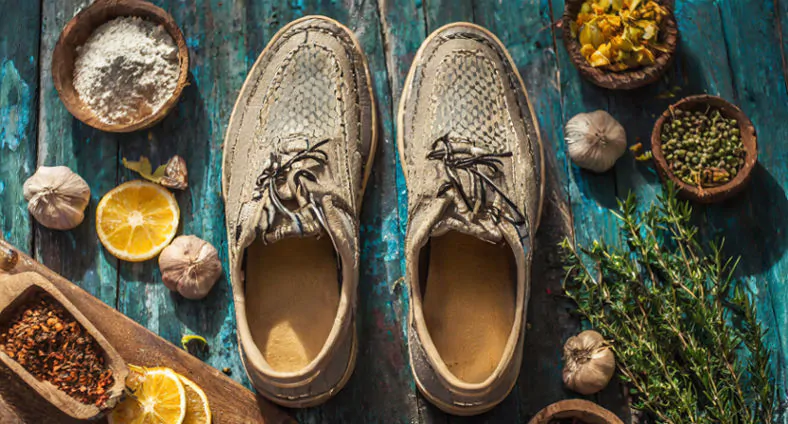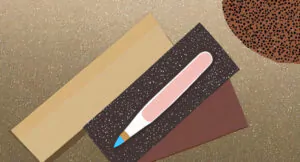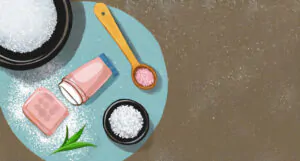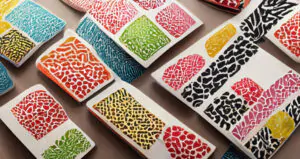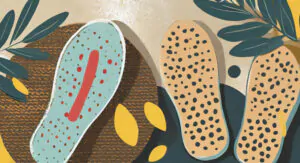INTRODUCTION
Slipping and sliding in shoes can be not only inconvenient but also dangerous. Whether you’re strolling down the street, navigating a workplace, or hitting the dance floor, non-slip shoes are essential for a secure and confident stride. In this blog post, we’ll explore how to make shoes non slip and will share top 10 simple and effective ways to make your shoes non-slip, ensuring you can walk with ease and prevent accidental slips.
LIST OF TOP 10 WAYS TO MAKE YOUR SHOES NON SLIP
1. Sandpaper or Nail File:
When looking to enhance the traction of your shoes, consider using coarse sandpaper or a nail file on the soles. Take the sandpaper or nail file and gently rub it against the sole surface. This process creates a coarser and rougher texture, greatly improving the overall grip. The increased traction ensures a more stable walking experience, reducing the chances of slipping or sliding, especially on smooth or slippery surfaces.
Application Method:
-
- Gently rub coarse sandpaper or a nail file against the sole surface of your shoes.
- Create a consistent, coarser texture by focusing on areas that experience more wear.
Benefits:
-
- Improves overall grip and stability by creating a rougher surface.
- Especially effective on smooth or slippery surfaces.
Considerations:
-
- Regular maintenance may be required to retain the enhanced traction.

2. Hot Glue Gun:
For a customized approach to shoe traction, a hot glue gun can be a creative solution. Use the hot glue gun to apply a pattern or design on the sole of your shoes. Once the glue dries, it forms a textured surface that enhances grip. This method not only provides functional benefits but also allows for personalization and creativity in improving the overall performance of your footwear.
Application Method:
-
- Use a hot glue gun to apply a custom pattern or design to the sole of your shoes.
- Ensure the glue is completely dry before wearing the shoes.
Benefits:
-
- Provides a creative and personalized solution for enhancing grip.
- Textured surface adds traction and stability.
Considerations:
-
- Design choice can affect the distribution of grip on the sole.
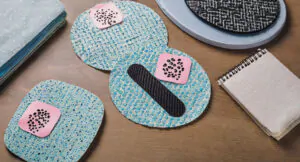
3. Traction Pads or Stickers:
For a convenient and readily available option, non-slip traction pads or stickers designed specifically for shoe soles are an excellent choice. Furthermore, these pads or stickers can be easily applied to the bottom of your shoes, instantly transforming them into slip-resistant footwear. This solution is practical, quick, and effective, thus making it a popular choice for individuals seeking immediate improvements in shoe traction.
Application Method:
-
- Easily attach non-slip traction pads or stickers to the bottom of your shoes.
- Ensure proper alignment for consistent traction.
Benefits:
-
- Convenient and quick solution for immediate slip resistance.
- Available in various shapes and sizes for customization.
Considerations:
-
- Check for proper adhesion periodically, especially after heavy use.

4. Spray-On Traction Products:
To add a non-slip surface to your shoes, explore the use of spray-on traction products. Firstly, these products are formulated to enhance grip on various shoe materials. Next, select a suitable spray for your shoes, apply it according to the product instructions, and let it dry. The result is an invisible layer that significantly improves traction, thereby making it easier to navigate different surfaces with confidence.
Application Method:
-
- Apply the spray-on traction product to the shoe sole according to the product instructions.
- Allow sufficient drying time for the product to form a non-slip surface.
Benefits:
-
- Invisible layer enhances traction without altering the shoe’s appearance.
- Suitable for various shoe materials.
Considerations:
-
- Choose a product compatible with your specific shoe material.
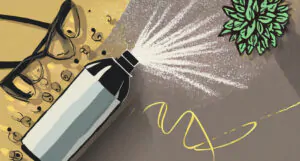
5. Apply Hairspray:
Enhance the grip on your shoes by applying a layer of hairspray to the soles. Once the hairspray dries, it leaves a slightly sticky residue that contributes to improved traction. This method is a simple yet effective way to make your shoes less slippery, providing additional stability on a variety of surfaces.
Application Method:
-
- Spray a layer of hairspray on the shoe soles and let it dry completely.
- The slightly sticky residue contributes to improved traction.
Benefits:
-
- Quick and accessible method for enhancing grip.
- Affordable and readily available.
Considerations:
-
- Reapplication may be necessary after prolonged use or exposure to water.
6. Use a Salt and Rubber Glue Mixture:
For a DIY approach to enhancing shoe traction, create a paste by mixing fine salt with rubber glue. Apply this mixture evenly to the sole of your shoes and allow it to dry. The salt adds texture, while the rubber glue ensures a secure bond, resulting in a durable and slip-resistant sole. This method is cost-effective and allows for customization based on individual preferences.
Application Method:
-
- Mix fine salt with rubber glue to create a paste.
- Apply the mixture evenly to the shoe sole and let it dry.
Benefits:
-
- Cost-effective DIY solution with customizable texture.
- Ensures a durable and slip-resistant sole.
Considerations:
-
- Allow sufficient drying time for a secure bond.
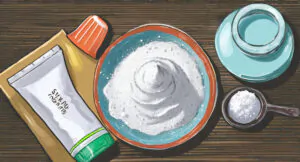
7. Baking Soda and Glue:
Create a gritty and slip-resistant surface on your shoes by mixing baking soda with glue to form a paste. Subsequently, spread this mixture onto the shoe soles and let it dry. The combination of baking soda and glue results in a textured surface that enhances traction, thereby providing a practical and accessible solution for making your shoes less slippery.
Application Method:
-
- Mix baking soda with glue to create a paste, then spread it on the shoe soles.
- Let the mixture dry thoroughly to achieve a textured surface.
Benefits:
-
- Provides a gritty surface for improved traction.
- Easily applied with common household items.
Considerations:
-
- Ensure even application for consistent results.
Don’t Forget To Check Out: What Does D and EE mean in shoes?
8. Grip Pads:
Invest in pre-made grip pads constructed from materials like rubber. Additionally, these pads are designed to be attached to the bottom of your shoes, offering a reliable non-slip surface. The durable construction ensures long-lasting traction enhancement, thereby making these pads a practical and effective solution for individuals seeking sustained improvements in shoe grip and stability.
Application Method:
-
- Purchase pre-made grip pads made of materials like rubber.
- Attach the pads securely to the bottom of your shoes.
Benefits:
-
- Durable construction ensures long-lasting traction.
- Readily available in various sizes and materials.
Considerations:
-
- Check for compatibility with different shoe types.
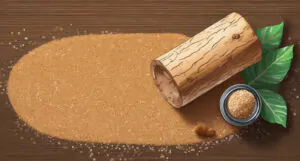
9. Cork and Sand Mixture:
Craft a textured and non-slip surface by combining fine sand with cork particles and glue. Apply this mixture evenly to the sole of your shoes and allow it to dry. The combination of sand and cork provides a unique texture that enhances grip on various surfaces, offering an aesthetically pleasing and functional solution to make your shoes less prone to slipping.
Application Method:
-
- Combine fine sand with cork particles and glue to create a mixture.
- Apply the mixture evenly to the shoe soles and let it dry.
Benefits:
-
- Provides a unique texture for enhanced grip.
- Aesthetic and functional solution for slip resistance.
Considerations:
-
- Ensure even distribution for consistent traction.
10. Buy Non-Slip Inserts:
For a straightforward and hassle-free option, consider purchasing non-slip insoles or shoe inserts specifically designed to improve traction. These inserts are easily added to your existing shoes, instantly upgrading their slip resistance. This solution is particularly beneficial for individuals who want a quick and effective way to enhance shoe grip without altering the external appearance of their footwear.
-
Application Method:
- Purchase non-slip insoles or shoe inserts designed for improved traction.
- Easily add the inserts to your existing shoes.
-
Benefits:
- Instantly upgrades slip resistance without altering shoe appearance.
- Convenient and hassle-free solution.
-
Considerations:
- Check for proper fit and size compatibility with your shoes.
Understanding Why Non-Slip Shoes Are Important
Slippery shoes can lead to accidents and injuries that makes it crucial to know why having non-slip shoes is essential.
Potential Hazards:
Slippery shoes can cause you to slide and fall, especially on surfaces like wet floors or icy sidewalks. This can result in injuries like sprains, bruises, or even more severe harm.
Importance of Secure Footing:
Non-slip shoes provide a secure footing, thus enabling you to walk with more stability and confidence. Moreover, they grip the ground better, reducing the chances of slipping and helping you stay on your feet, even in tricky conditions. This is especially important in places where floors may be wet, oily, or uneven.
By understanding these risks and benefits, you can make informed choices about your footwear to stay safe and prevent accidents caused by slippery shoes.
Choosing the Right Shoes for Slip Resistance
Selecting the right shoes is important to make sure you don’t slip and fall, especially in different places. Here’s I got a simple guide to help you guys pick shoes with built-in slip-resistant features:
1. Look for Rubber Soles:
- Shoes with rubber soles provide good traction. They grip the ground better, helping you stay steady.
2. Check for Tread Patterns:
- Tread patterns are the designs on the bottom of your shoes. Shoes with deep and varied patterns offer better grip on different surfaces.
3. Consider Slip-Resistant Brands:
- Some shoe brands focus on making shoes that are less likely to slip. Look for these brands, and you’ll likely find options with better grip.
4. Think About the Material:
- Leather, suede, and other smooth materials may be slippery. Opt for shoes made from rougher materials or those treated for slip resistance.
5. Pay Attention to Shoe Fit:
- Shoes that fit well are less likely to cause you to stumble. Ensure your shoes are the right size and provide good support.
6. Test Before Buying:
- If possible, try walking around a bit in the store to see how the shoes feel. Pay attention to how they grip the floor.
By keeping these simple things in mind, you can choose shoes that help you stay on your feet, whether you’re walking on a sidewalk, in a store, or anywhere else.
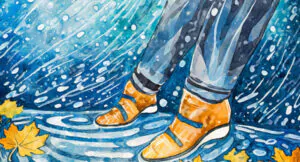
Spotting Slippery Surfaces
It’s important to know which surfaces are more likely to make you slip and fall. So let’s make it easy for you to identify these tricky areas:
1. Wet Floors:
- Be extra cautious when walking on floors that are wet or recently cleaned. Water and slippery surfaces often go hand in hand.
2. Icy Sidewalks:
- In cold weather, sidewalks can become icy and treacherous. Watch out for icy patches, especially in shaded areas.
3. Oily or Greasy Floors:
- Floors in places like kitchens or garages may have oil or grease spills, making them slippery. Take extra care in these areas.
4. Polished Tile or Marble:
- Certain types of flooring materials, like polished tile or marble, can be slippery, especially when they’re shiny and smooth.
5. Uneven Surfaces:
- Uneven sidewalks or surfaces with bumps and cracks can pose a tripping hazard. Watch your step on these uneven paths.
6. Stairs and Ramps:
- Stairs and ramps can become slippery, especially if they’re made of materials like wood or metal. Exercise caution when going up or down.
Top Recommendation: Best Shoes For Neuropathy Podiatrists Recommendations
DIY VS Commercial Non-Slip Solutions
When it comes to making your shoes less slippery, you have two options: doing it yourself or buying products that are ready-made. Let’s look at both to see which might work better for you.
Do-It-Yourself (DIY) Methods:
-
Effectiveness:
- DIY methods involve using things like sandpaper, glue, or household items to create a non-slip surface.
- They can be effective, especially for quick fixes and temporary solutions.
-
Convenience:
- DIY solutions are often convenient because you can use things you already have at home.
- However, they might need more maintenance over time.
Commercial Non-Slip Products:
-
Effectiveness:
- Ready-made products, like non-slip pads or sprays, are designed specifically for this purpose.
- They are usually tested for effectiveness and can provide longer-lasting results.
-
Convenience:
- Commercial products are convenient because you can buy them ready to use.
- They often come with instructions, making them easy to apply.
Choosing What’s Right for You:
-
Consider Your Needs:
- If you need a quick fix, a DIY solution might work. For a more long-term solution, commercial products may be better.
-
Budget and Time:
- DIY methods can be more budget-friendly, but they might require more time and effort. Commercial products might be quicker but could cost a bit more.
-
Effectiveness Over Time:
- Think about how long you need the non-slip effect. Commercial products often offer more sustained results, while DIY methods might need regular attention.
By comparing these two approaches, you can decide which method suits your situation best, ensuring you choose a solution that keeps you safe and confident on your feet.
CONCLUSION
Making your shoes non-slip doesn’t have to be a complicated process. With these 10 simple and effective methods and some other tips and discussion, you can enjoy confident strides and reduce the risk of accidental slips. Whether you choose slip-resistant shoes, DIY solutions, or additional accessories, taking proactive steps to enhance traction will make every step safer and more secure. Remember, a little effort goes a long way in ensuring your shoes keep you on solid ground.
FREQUENTLY ASKED QUESTIONS
How can I make my shoes non-slip without buying new ones?
Certainly! There are easy DIY methods to enhance shoe traction. First, try sanding the soles with sandpaper to create a textured surface. Alternatively, apply a thin coat of hairspray, or use adhesive sprays designed for this purpose. If you prefer a hands-on approach, consider using a hot glue gun to create your own custom traction patterns.
Are there affordable accessories to make any shoes non-slip?
Absolutely! There are budget-friendly options available. Look for grip pads or traction tapes that you can easily add to your existing shoes. These adhesive solutions come in various shapes and sizes, allowing you to customize the level of traction based on your shoe type and personal preferences.
Can I use household items to improve shoe grip?
Yes, everyday items can be surprisingly effective. For a quick fix, scuff the soles of your shoes against a rough concrete surface to create a coarser texture. Another DIY solution involves mixing salt and rubber glue to create a gritty layer on the soles, enhancing traction. These household remedies can be handy in a pinch.
How can I maintain long-term slip resistance in my shoes?
Regular maintenance is key to sustained slip resistance. Clean the soles of your shoes regularly to remove dirt and debris that can compromise traction. Additionally, inspect the shoes for signs of wear and tear, and replace the soles or shoes as needed. This proactive approach ensures that your shoes continue to provide a secure grip over time.

